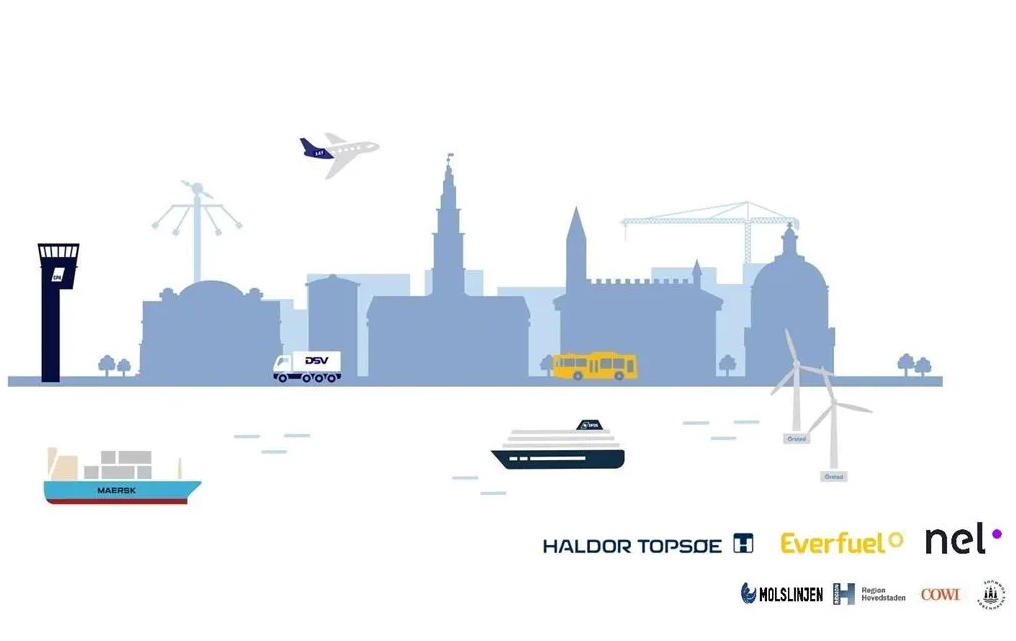Denmark – The partnership behind the Power-to-X flagship project ‘Green Fuels for Denmark’ has decided to bring forward parts of the project to produce green fuels for heavy transport two years earlier than planned.
In particular, the partnership has decided to move 100 MW of the second phase’s 250 MW electrolysis from 2027 to 2025, as well as start capturing sustainable carbon dioxide in 2025.
When the second phase of ‘Green Fuels for Denmark’ is fully operational in 2027, it will be able to supply green fuels equivalent to Denmark’s total domestic jet fuel consumption, meeting the government’s goal of 100 percent green domestic aviation by 2030, three years ahead of schedule.
Green aviation
The 100 MW accelerated phase can produce more than 50,000 tonnes of sustainable fuels in 2025, mostly e-methanol for shipping, but the partnership will look into whether parts of ‘Green Fuels for Denmark’s’ expected production of green aviation fuels can also be brought forward to 2025, prompted by the Danish Government’s ambition to establish green aviation opportunities in Denmark as early as 2025.
However, achieving the Danish 2025 and 2030 goals will necessitate the creation of a regulatory framework that makes green jet fuel a viable and competitive alternative to fossil fuels. Chemically, there are a number of ways to make aviation fuels from hydrogen and sustainable carbon dioxide, and the partnership will look into all of them.
The original vision for ‘Green Fuels for Denmark’ was to build an electrolysis plant with a capacity of approximately 10 MW in 2023, then 250 MW in 2027, and 1,300 MW by 2030. The partnership’s plan to expand the second phase of Green Fuels for Denmark to 250 MW by 2027 remains unchanged. If the necessary framework is established, this phase will be able to supply enough jet fuel to cover significantly more than the expected Danish domestic consumption of jet fuel, and thus contribute to the conversion of international aviation from Denmark. At the same time, the full implementation of the second phase is contingent on the availability of sufficient new green power.
International leadership
Green Fuels for Denmark’s final 1,300 MW phase will be able to supply green fuels, primarily jet fuel, that can replace approximately 30% of total fuel consumption at Copenhagen Airport, implying a significant green conversion of international as well as domestic air traffic.
There is currently no significant consumption of Power-to-X-produced sustainable aviation fuel in Denmark or internationally. As a result, Denmark has a unique opportunity to establish international leadership, but the technology for producing the fuels must be significantly matured, just as new aviation fuels must undergo a thorough and extensive approval process before being used in aircraft.


